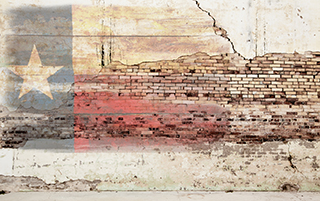
On August 14, 1945, Japan announced its surrender in World War II, marking the day for many as Victory over Japan Day (V-J Day) and, in essence, the end of the war.
Texas played a huge role in the success of the U.S. and Allied Forces in the war. More than 750,000 Lone Star soldiers served during World War II—22,000 went off to fight and didn’t come home alive.
This year, in honor of V-J Day, we wanted to pay tribute to three Texas heroes who went above and beyond to protect America in World War II.
Leonard Roy Harmon. Born in Cuero in 1917, Leonard Roy Harmon worked with livestock and as a handy man until enlisting in the Navy in 1939 at the age of 22. He served as a mess attendant, which was one of the few jobs open to black men in the Navy at that time.
While serving aboard the USS San Francisco in November of 1942, Japanese fighter planes attacked, raining down bullets and killing almost every officer on the bridge. Harmon flew into action, disregarding his own safety and helping carry the wounded to safety. Harlon died while shielding a wounded shipmate from an explosion.
For his heroism, the Navy awarded him the Navy Cross posthumously. And a few months after his death, Harmon became the first black sailor to have a ship named after him. The USS Harmon was a destroyer escort launched in July of 1943. Harmon is buried in an American cemetery and memorial in the Philippines. He has a historical marker at the Cuero Municipal Park, and a poster featuring him hangs in the National Portrait Gallery in Washington, D.C.
Silvestre S. Herrera. Born in Mexico in 1917, Silvestre Herrera spent his formative years growing up with an uncle in El Paso. He lived there until his late twenties, raising a family and working as a farm hand.
In 1944, he joined the Army, serving with the Lone Star State’s 36th Infantry Division and by later that year was fighting in Europe.
In March of 1945, Herrera and his platoon were on a mission in France when they stumbled upon a hidden machine gun bunker that opened fire on Herrera and his men. The other soldiers scattered. But Herrera, instead, charged the bunker, firing his rifle and lobbing grenades. Herrera singlehandedly rounded up eight German prisoners during the exchange.
Later that day, a second German bunker again overtook Herrera and his platoon with machinegun fire. Again, Herrera charged, though this time through a field of landmines. Two explosions took both of his legs below the knee. But Herrera kept fighting, pinning the Germans with rifle fire long enough for his fellow Americans to flank the Germans.
Despite his massive injuries, Herrera made it home. Among many honors, he received the Medal of Honor and the Purple Heart. Herrera died in 2007 at his home in Glendale, Arizona.
James M. Logan. Born in McNeil, Texas, in 1920, James M. Logan joined the Army in 1936 at just 15. By 1943, he was serving as a sergeant in the 142nd Infantry Regiment, 36th Infantry Division (the same as Herrera). On the morning of September 9 of that same year, Logan landed with Allied Forces on an Italian beach in the Gulf of Salerno.
On that day, he and his men had only advanced a few hundred yards to an irrigation canal when they suddenly came under heavy fire from a machine gun. Germans were firing down on the men from a bunker perched on top of a wall in the distance.
Logan positioned himself where he was able to shoot three Germans, and then he got up and made a break for the wall, sprinting through a barrage of machine gun bullets. When he got there, he crouched at its base and moved to a spot just under the machine gun. Then he leaped up over the wall, shot two gunners, grabbed the machine gun and wheeled it around in time to shoot other Germans as they tried to escape. Later that same day, Logan made a mad dash toward a home where a sniper had taken up position. Dodging the gunfire, Logan made it to the house, shot off the lock, burst inside and shot the sniper.
Like Herrera, Logan also made it home alive. He received the Medal of Honor, the Distinguished Service Cross, the Bronze Star Medal and the Purple Heart, among others. Logan died in 1999 at the age of 78 and is buried in Austin.
At Veteran Energy, we know how fortunate our nation is to have Texans such as Harmon, Hererra and Logan fighting to keep us free. And we thank all of our heroes for their courage and selflessness.


